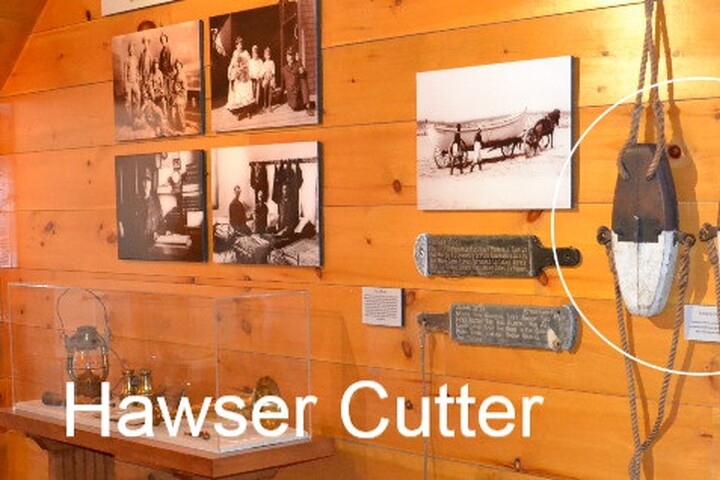
A “hawser” is the nautical term used for a heavy rope used for towing or mooring vessels. While it’s tempting to credit thrifty Yankee lifesavers with figuring out how to retrieve a line tied to the mast of a sinking ship, it was the British who developed the method, and the U.S. Life Saving Service that adopted it. Due to the thick durability of a hawser, a special tool was created to cut it.
After a shipwrecked crew was landed from a stranded vessel it was necessary to release the large, expensive hawser from the vessel so that it could be used again. In this situation, a hawser cutter was employed. The hinged cutter was closed around the hawser with the white painted end on the inshore side. The whip line was then tied to the cutter and used to pull it back from the shore toward the wreck. Once as close to the mast as possible, the hauling in whip was then pulled, closing the sharp knives in the cutter in an action that severed the hawser. Once free from the mast, the hawser, cutter and whips were simply pulled ashore; thus, enhancing readiness and saving money for the Life Saving Service.
Follow the Nantucket Shipwreck & Lifesaving Museum on Facebook, Instagram, or Twitter for interesting photos, stories, and maritime artifacts from the museum's collection. Stay tuned for details about 2017's exhibition and programs.